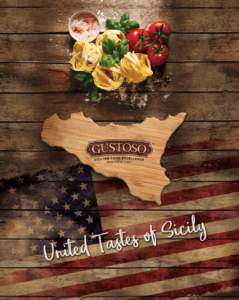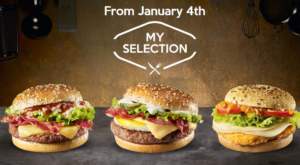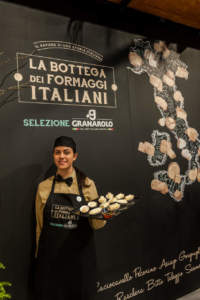The United States, second reference market for Italian agri-food exports, with more than 4.6 billion Euros in 2016, and in the lead as for investments by our government, are a very different market than our one and such more similar European contexts as France or Germany, to mention the other two states in the top 3 of Italian export. Here are some assessments and advice on how to deal with it from the point of view of marketing, provided by Michael Priem, founder and CEO of Modern Impact, Advertising Agency in Minneapolis (Minnesota), active in both traditional and on-line campaigns. Priem worked as a marketing consultant for General Mills, BestBuy, Target, Sears, Williams Sonoma, Harley Davidson, American Express, and Hp.
Let's talk about the American market. What does distinguish it?
There is a huge change in consumer behaviour in the United States. For example, the concept of home delivery of food is quickly emerging, so such companies as Halo Fresh or Blue Apron are growing. The percentage of those who use it is still low, but it is rapidly increasing, as evidenced by the recent public offering of shares to the public and quotation at the New York Stock Exchange for Apron. This model is working, because it meets a need, the one to optimise the short time available for cooking, and on the other hand it proposes quality food that we would normally not be able to prepare at home. In addition, multichannel solutions are increasingly widespread and transversal between age groups, often more by Boomers than Millennials, and many brands such as Whole Foods, Walmart, Target, have more and more digital marketing initiatives. All this has an impact on traditional shopping at the supermarket.
Is this a shift in the means of communication?
Brands spend an increasing share of their budget for on-line initiatives, and this is also true for retailers. In addition, and it is no surprise, they are also becoming much more sophisticated as for ‘how’ they spend their money. For example, they rely more and more on data concerning consumptions, they monitor them in order to transmit more and more personalised messages on digital channels.
 What would you recommend to Italian brands?
What would you recommend to Italian brands?
Italians are very good at creating emotions; we need only think of fashion, with everything it evokes, or Ferrari, but it is true for all the best Italian brands. I would tell them to continue to stir emotions, therefore to invest in this aspect, but in addition they should start thinking about the need to be present digitally. The first thing a brand owner should worry about is to make sure that the brand is immediately available and accessible to consumers: it is an indispensable asset.
What should they do exactly?
It is rather simple: they should make sure that their product is exposed on-line with the right photo, the correct description, and help their digital merchant easily get these elements to immediately enhance the brand. If the product is not enhanced, or it is not properly, nobody buys it, because no one knows it.
If emotion is so important, do the concepts linked to genuineness, Italian spirit of the product have to be passed on by emphasising emotions, too?
I think so, whatever the archetype to which the brand refers is; there is always an emotion at the base. In addition, although digital is now the first media to which the consumers turn, without an emotion they may decide not to read that advertising and not watch that video. Even in a ‘digital world first’, such as the one where we live, we cannot forget about human chemistry.
 This is true for a luxury brand; what about daily shopping?
This is true for a luxury brand; what about daily shopping?
Among my customers there is the largest dairy producer in the world, coming from New Zealand: to succeed on the shelf, even in a very commodity market, it is necessary to help the consumer understand why the brand is different from the other ones, and then to be disruptive, break the patterns. Consumers like to explore and discover new things, they love the idea of new.
How much are Americans interested in the origin of a product?
They are very interested in this aspect; consumers, even in the United States, are now expecting to read the origin on the label. We are going through a time of general lack of confidence: towards the rulers, finance, and even marketing; consumers are more and more ‘social’, they often read reviews from other customers, before buying. Marketing is not enough to liven up sales, boosting consumers’ confidence is an absolute must, and it is done by talking about traceability and production.
How is it possible to offer consumers a reliable source of information?
By taking part in the conversation about the brand, being present, in a one-to-one dialogue. If a negative review emerges, by responding it is possible to defuse it. Recognising criticism and participating in the conversation is crucial in order to protect the brand.
 In this conversation, does traditional communication have a role yet?
In this conversation, does traditional communication have a role yet?
Yes, it does. I believe in a ‘digital first’ strategy, but also that there is still space for display, printing, and traditional media in the customer journey. This is especially true if we want to give accurate information, and as for glossy magazines and also for packaging, for example, there is a very nice tactile experience that travels with the information. We need an all-channel communication, in which the ‘physical’ side is consistent with the digital one. This is somehow true in all markets, food or non-food ones.
 What features should a current marketing campaign have?
What features should a current marketing campaign have?
In the past the operators talked about media campaigns that availed themselves of multiple channels. Now these channels are hundreds, and they are very fragmented, so many different creative messages are needed to reach them, specific to segments or audience groups that are part of the brand's target.
What is the customisation frontier today?
Modern Impact created Intelligent Pixel, a tool that targets the high-end consumers according to their daily needs, exploiting the big data. Today we have information that could not have been obtained before, and this allows us to create much targeted communications.
Will immigration in the EU make the multicultural approach more similar to the United States, and thus the approach to communication, too?
I think so, I think the world is constantly evolving, and that the brands have already had to deal with this notion of non-stagnancy. Messages and stories around the brand evolve constantly, and in the presence of cultural migration, brands are ready to face it and adapt themselves.
An overview of the specificities of American consumers: novelty, emotion, participation, and then?
Americans love to be entertained, and our local brands have understood it very well, embracing the art of storytelling. European brands tend to be more oriented to the facts and to a formative way; so I think that one of the biggest opportunities for Italian brands, especially those of consumer goods, is just storytelling, with the aim of creating an emotion.

